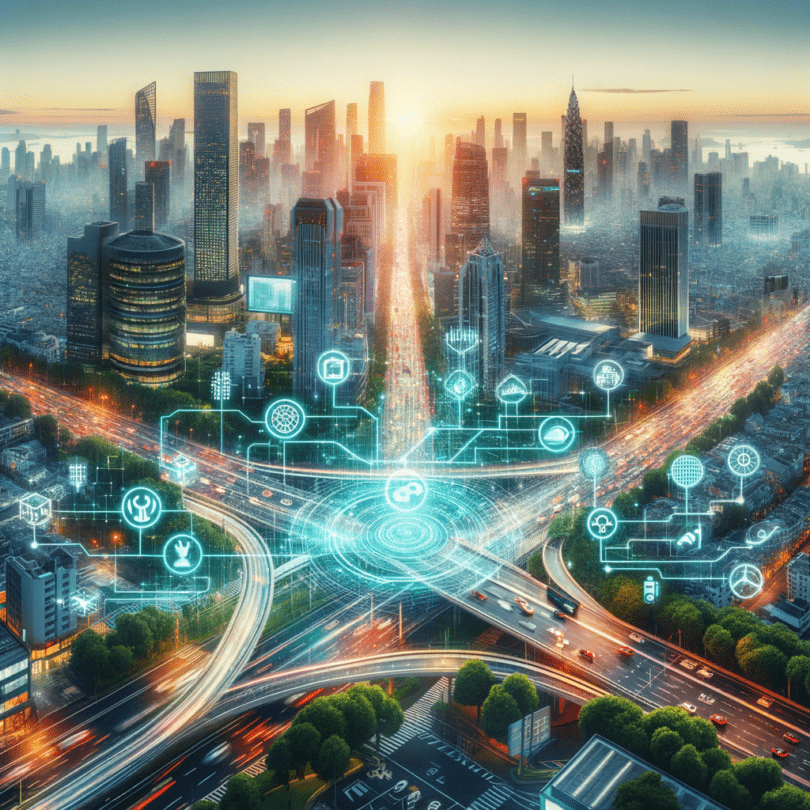So there I was, on a city bus, stuck in what seemed like the world’s longest traffic jam. You know the drill—headlights blinking like some bizarre, modern-day symphony that only managed to play frustration. Our fellow passengers weren’t too shy to express their irritation either. It struck me: with all our fancy technology, why do we still wrestle with traffic jams? And does it not weigh massively on our dear planet? Determined for answers, I decided to dive deep—not through the clogged streets (I’m not that brave)—but into the world of artificial intelligence and see if it holds any keys to untangling this mess.
To tell you the truth, I’d never really connected AI with the world of city traffic before. AI smashing us at chess is one thing, but could it really smooth over our roads, ease the flow, and help cut pollution? As it turns out, if traffic were a tangled game of chess, AI’s gearing up to be the grandmaster we’ve been dreaming of.
Urban Traffic: A Tangled Web
Picture this: a huge, busy city, packed with people hustling all at once. It’s like a live episode of chaos theory starring your very own city. And hovering above it all, the stubborn smog, an obnoxious guest who overstays their welcome. With people and vehicles chipping in huge chunks to the world’s carbon emissions, it’s a big worry. I’ve seen cities struggling, and trust me, feeling trapped and helpless is everyone’s reality during rush hour. But hang in there, because AI, like that smart friend who sees things no one else does, is here to help.
AI: The Cool Kid with All the Solutions
Who would’ve guessed that training computers to think might just make our streets a whole lot happier? But that’s AI for you—it slices through the hubbub, honks, and haze. These savvy little machine brains process heaps of data faster than your granny can sigh “back in my day.”
The snazziest thing AI does? Predictive analysis. It digs into traffic histories, current data, weather factors, event schedules, you name it, to forecast traffic smoother than a seasoned meteorologist. Imagine a smart traffic light adjusting its timing on the spot, keeping us from gnashing our teeth at a red light. Feels like magic, right? Yet it’s all zeros and ones in action, figuring out if it should let more cars pass or hold ’em a bit longer.
Transport Networks That Really Know People (and Cars)
AI’s adaptability stirs my admiration, somewhat like making new friends. It learns the city, bustling about just as we do—cars, bikes, pedestrians—and finds the tweak that’ll cut delays without playing favorites. It’s like weaving a tapestry and knowing which threads harmonize and which unravel the work.
Public transit, too, breathes easier thanks to AI. Tweaking routes, dodging gridlocks—the buses, trams, everything moves with more pep. On that bus, feeling trapped, I dreamed of a world where passengers, like synchronized dancers, arrived on time, with smiles, perhaps even humming little tunes.
The Ethical Dance-Off
Still, AI has big responsibilities juggled in its silicon mind. Cutting traffic ties also means we tread upon sensitive ground—ethics is right up there. It’s not just about who speeds through the green first—it’s about weighing and resolving needs fairly.
Chitchats about fairness and efficiency bring a tough nut to crack. We shouldn’t risk skewing odds, favoring posher locales, or birthing inequality stories along the way. And let’s not even toy with scenarios involving hacked traffic lights going haywire—cities exploring AI-driven systems must shield our safety, above all else.
Reduced Emissions, Puffed Chests
Thinking back on that bus ride makes me cringe at the pollution cloud hanging low. Engines growling while standing dumbstruck, each idling second adding to that murky layer above the skyline. But AI—our trusty tech squire—steps in, moving cars quicker, playing our gas pedals like a maestro. That translates into fewer emissions—purer air, happier lungs, less sunscreen needed when the sun flares.
If cities embrace AI traffic saviors, they’ll cut emissions dramatically, like leaping into your day with a pep, a step, and your favorite tune intertwined in your thoughts. And for our dear Mother Earth, fewer carbon emissions mean a healthier, more hopeful future for all its creatures, including us wandering humans.
AI as Our Navigational North Star
Not to say it’s all sunshine and roses—AI systems need testing, fine-tuning, and people guiding them into place. They’re pieces of a grander puzzle, not magic wands. But when they snugly fit into broader plans, they offer an illuminating north star.
Seeing cities spotlighting cool AI-led traffic ventures has me cheering. It’s inspiring when mindful communities couple technology with environmental wisdom, crafting roadmaps toward tomorrow’s sustainable cities.
I imagine another future bus ride, gliding smoothly past a lighter traffic queue, and a clear skyline for my dreams to dance upon. AI doing its bit in traffic control has turned hopes for breathable air and a healthier planet into an achievable journey, one orchestrated light change at a time. Isn’t that quite the trip?

